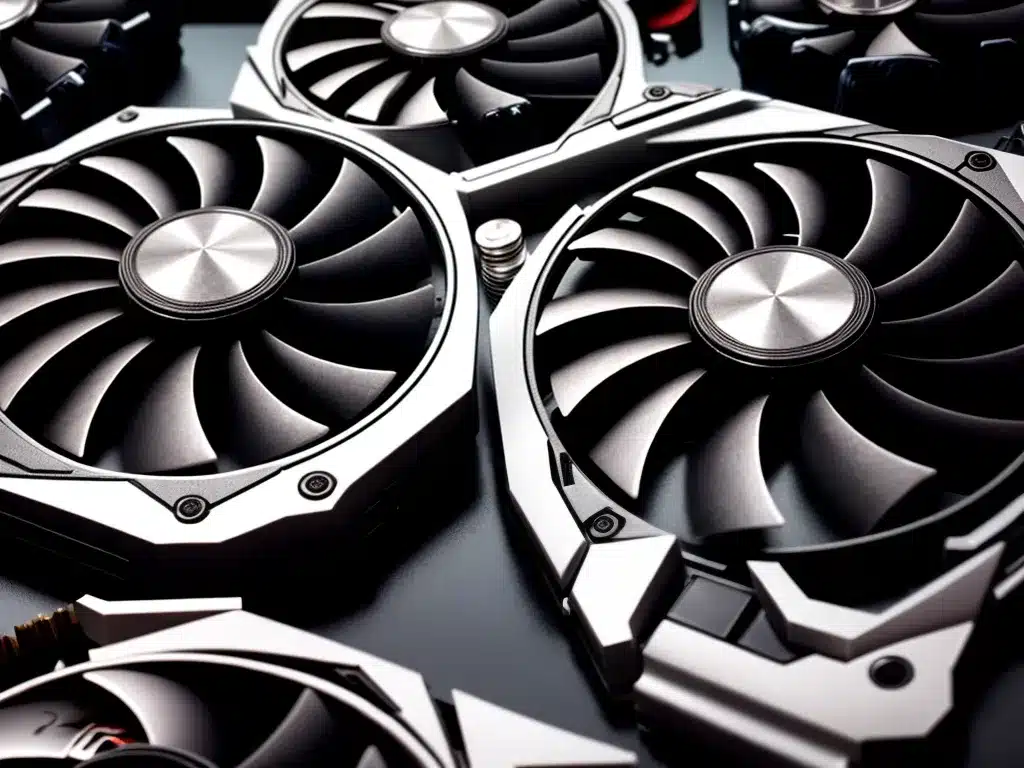
A failing graphics card can cause a lot of frustration. As an avid PC gamer and graphics professional, I know the importance of having a fully functional graphics card. Here are the signs that indicate it’s time to replace your graphics card and how to properly diagnose issues before spending money on a new one.
Visual Artifacts and Display Issues
Visual glitches and artifacts on screen are a common symptom of a failing graphics card. This includes:
- Flickering, distorted, or discolored video
- Patterns, dots, lines on the screen
- Parts of the screen not displaying properly
- Horizontal or vertical lines across the screen
If I notice any strange visual behavior like this, it likely points to a problem with the graphics card. Artifacts indicate the GPU (graphics processing unit) is having trouble rendering graphics correctly.
Seeing artifacts doesn’t definitively confirm the GPU is defective. First, I update my display and GPU drivers to rule out a software issue. If the artifacts persist, it’s a sign of GPU failure.
Game Crashes and Display Driver Errors
Games and 3D applications put the graphics card under heavy load. If the card is faulty, games may crash unexpectedly or throw up display driver errors like:
- “Display driver stopped responding and has recovered”
- “Display driver failed to start”
- Game specific errors mentioning “D3D” or DirectX
Frequent game crashes point to hardware problems with the graphics card. Like artifacts, I first update my drivers. If the crashes continue, it likely indicates a hardware fault with the GPU or graphics memory.
Overheating and Loud Fan Noise
As graphics cards start to fail, they can overheat easily. Signs of overheating include:
- Loud fan noises coming from the PC
- Fans running at very high speeds all the time
- High temperatures above 90°C when monitoring the GPU
The extreme heat damages the chip and speeds up failure. Adequate cooling is key for longevity, so loud fans and high temps are red flags something is wrong. Cleaning dust from heatsinks and replacing thermal paste can help, but overheating often means the GPU needs replacement.
Performance Issues
Degraded performance is another symptom of a failing graphics card. This may include:
- Noticeably slower framerates in games
- Lag and stuttering during graphics intensive tasks
- Programs taking longer to open and respond
If performance is significantly worse than usual, the GPU could be defective. I monitor framerates and benchmark scores to compare. If they are much lower than expected, it likely indicates a problem with the graphics card.
Other Failures and Issues
Some other problems that can point to a failing GPU:
- Discolored video output, tinted blue/red/green
- No video output at all, blank screen
- Blinking power lights on the GPU
- Artifacts even at BIOS, before booting into OS
-PCIe slot issues, improper seating of the graphics card
Unusual video output and PCIe slot issues can mean the card itself is damaged. Blank screens and dead output usually indicate complete failure.
Diagnosing a Failing GPU
Before replacing my graphics card, I run diagnostics to properly identify the problem:
- Use GPU-Z to monitor temps, clocks, usage, and errors
- Stress test the GPU with Furmark and watch for artifacts
- Test the card in another PC if possible
- Reseat connections, try a different PCIe slot
- Eliminate software issues by wiping drivers with DDU
Targeted troubleshooting helps determine if the card itself is defective before buying a new one. I avoid replacing my GPU prematurely if the issues can be fixed by software updates, thermal paste replacement, or RMA of a defective card still under warranty.
When to Upgrade Due to Failure
In summary, here are cases where a graphics card is clearly failing and needs replacement:
- Artifacts and crashes persist after software fixes
- Overheating continues despite cleaning and new thermal paste
- Noticeably slower performance than expected
- PCIe slot issues, blinking lights, dead output
- Original GPU is too old and unsupported
If I’ve diagnosed a faulty GPU using the steps above, it’s time to upgrade. For gaming and professional work, I can’t afford the downtime of an unstable graphics card. I research options compatible with my PC and budget to find the best replacement GPU.
Final Thoughts
With heavy use, GPUs will eventually fail. Knowing the warning signs allows me to spot a defective graphics card early. Diagnosing the issue properly before buying a replacement also saves time and money. While a dying GPU can be frustrating, carefully identifying failures helps make the upgrade process smooth and worthwhile.












